Menu
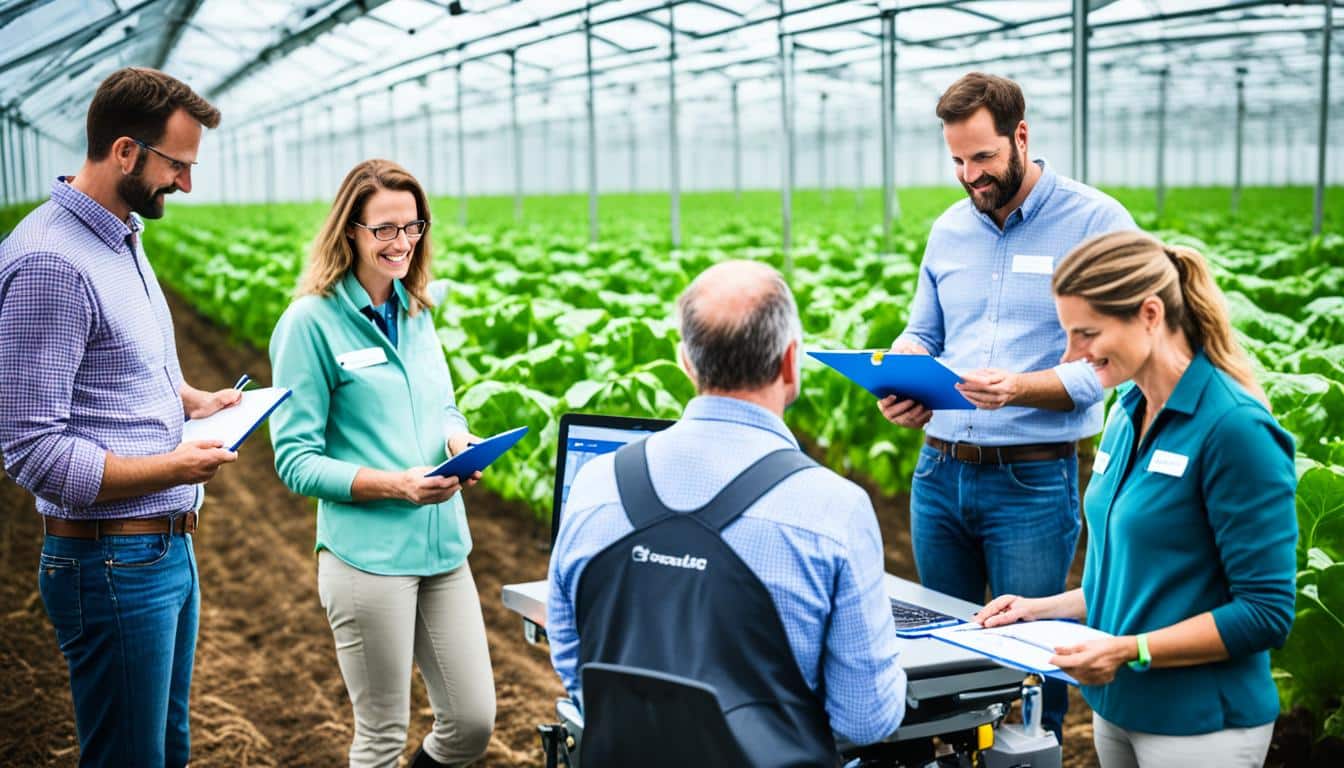
Did you know there are over 100 universities in the Land-Grant University (LGU) System? They focus on research, teaching, and services across America. This is just the beginning of how partnerships in agriculture boost innovation worldwide. These collaborations involve the National Institute of Food and Agriculture (NIFA), universities, government groups, and businesses. Together, they aim to overcome global food security challenges.
The Feed the Future initiative is central to these partnerships. It brings together the skills of U.S. universities, government bodies, and international agricultural research centres like CGIAR. This effort speeds up the process of creating and using new solutions. These solutions fight malnutrition and improve food security around the world. The U.S. Government’s approach for global food security focuses on working with many groups. This includes the Board for International Food and Agricultural Development and National Agricultural Research Systems (NARS).
Agricultural research partnerships are key to tackling many issues. These include making food supply better, growing more crops, and reducing climate change effects. The world of farming is now focusing more on working together. This includes various groups such as schools, the government, and companies coming together.
In India, teamwork in farming is making big differences, showing how important it is. Over the last two years, working together has led to big steps forward. This trend shows a move to using more teamwork from many places to create farming tools. The idea of many groups from a country working together is vital. It helps us understand how well different groups working together make farming tools.
Important groups in changing farming include worldwide and local research centres working with universities. Big campaigns like Feed the Future show why it’s important to work together. These join people from governments, companies, and other groups. Such efforts are more and more important in helping farming move forward.
Looking back, we see great examples of why teaming up in farming is a win. In India, working together has helped farms do better, made sure there’s enough food, and helped the economy. Research combining numbers and stories gives a full picture. It shows the long-term positive effects of working together on farming in society.
Collaborative research projects in farming push for new ideas. They help create better crops and ways to farm that don’t harm our world. Teamwork means we use what we know, working together to make our food systems strong and smart.
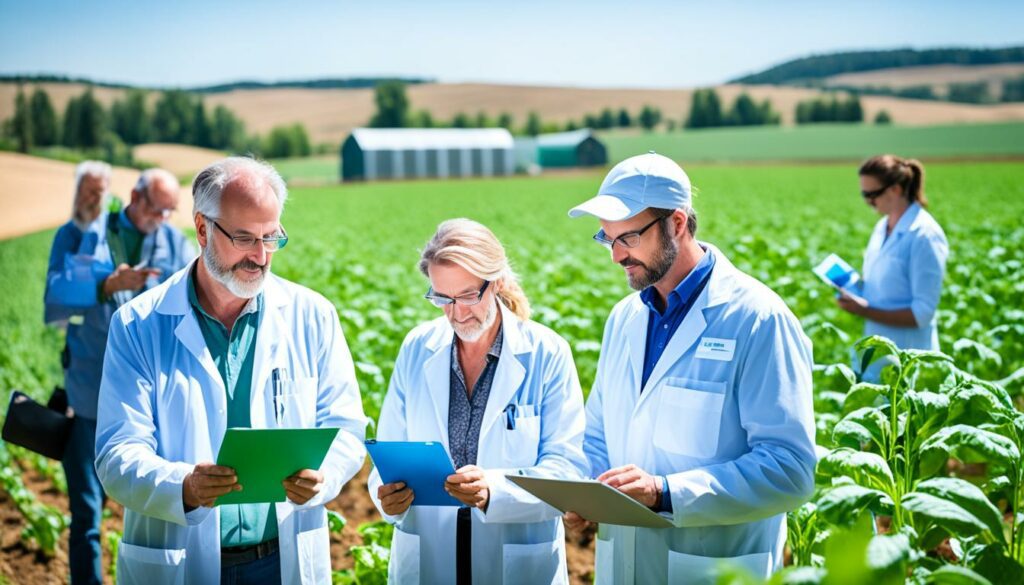
Working together has greatly boosted what and how much we grow. Through projects joining many groups, we’ve taken on big problems. This way, we can handle things like new bugs and plant sickness, keeping our food plentiful and healthy.
When applying to the AFRI, working with people from other countries is okay. Even though only U.S. groups can apply, partners outside the U.S., such as in Ireland, are welcome. They can help by bringing new skills and sharing in funds to make our farming even better.
Making farming that lasts is key to our future. Group projects let NIFA, along with others, support good farming for all places, from cities to the countryside. Non-profit groups help take new farming science to where it’s needed most.
NIFA doesn’t just work in the U.S. They also help in other countries to make food safe and farming kind to the Earth. By teaching better ways to farm, these efforts use less and last longer, making sure there’s always enough food.
Working with U.S. universities on agricultural research offers access to a wealth of expertise and resources. They are key in solving global food security challenges through partnerships. These partnerships use their advanced research and knowledge to fight food security worldwide.
Partnerships with research institutions show how important they are in agriculture. Feed the Future has worked with leading U.S. universities like Cornell and UC Davis. These collaborations have introduced new solutions and technologies for agricultural issues. They have improved crop production, conservation, and sustainable farming methods.
The Feed the Future Innovation Labs show successful partnerships in agriculture research. These labs connect over 500 institutions from more than 55 countries. They join U.S. universities with research institutions in developing countries. Their work has educated over 3,700 students and carried out projects that make a difference globally.
| Innovation Lab | Focus Area | Funding |
|---|---|---|
| AI-CARING | Collaborative Assistance and Responsive Interaction | Amazon, Google, NSF |
| AI-EDGE | Future Edge Networks and Distributed Intelligence | DHS, NSF |
| TILOS | Learning-Enabled Optimization at Scale | Intel, NSF |
The National Agricultural Research Systems (NARS) are key in the field of farming innovation. They help tackle local farming problems. NARS make sure the solutions they find are useful for local areas. This way, they help villages prepare for having enough food now and in the future.
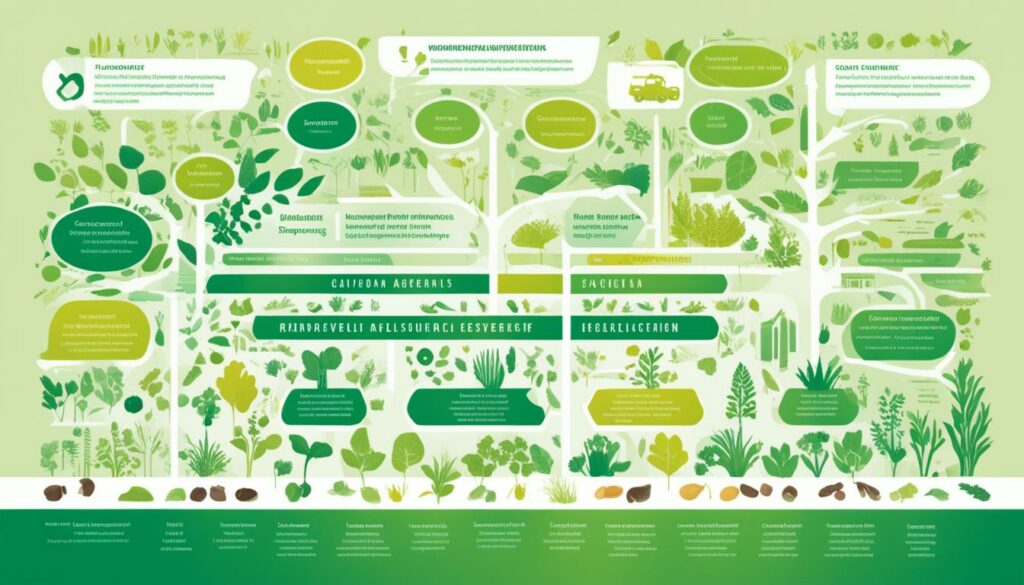
NARS are very good at seeing what the farming sector needs in their areas. They work closely with many partners like the government and schools. This teamwork helps them come up with special ways to overcome farming problems. Their work is vital in making better crops and keeping animals healthy for food.
NARS come up with new and better ways of farming. They take technologies and adjust them to work well in local conditions. The CGIAR, for example, has helped share skills and technologies worldwide. This approach has sped up the use of new tools across 90 countries.
Here are some important facts:
| Key Statistic | Details |
|---|---|
| CGIAR’s Global Reach | 3000+ partners in 90 countries |
| Engagement Framework for Partnerships & Advocacy | Sets out guiding principles for achieving common goals |
| Collaboration with NIFA | Over 100 land-grant colleges and universities in the U.S. |
Working together is key for NARS to create innovations that meet local needs. This greatly helps in making sure there’s enough food worldwide.
Working with CGIAR centres is key in tackling big global agricultural issues. They team up to boost crop output, protect plant types, and fight bugs and illnesses. This way, the farming industry is made stronger and more sustainable.
CGIAR teams up with more than 3000 partners in around 90 countries. They include groups from civil society, farms, funders, international bodies, nations, research places, and businesses. CGIAR aims to help improve farming across the world by sharing knowledge and working together.
CGIAR’s teamwork shines in its public research projects. For instance, in 2017, their programmes partnered with others 1,961 times. These efforts covered all stages of research work, showing their dedication to getting things done together efficiently.
The High-level Advisory Panel (HLAP) made suggestions for better partnerships at CGIAR. They recommended more than 20 actions. The goal is to make working together smoother, with everyone learning and improving as a team.
CGIAR is working hard to improve how they team up with others. They really focus on working closely with countries they help. This shows in their work: most of the new ideas in 2017 came from combined efforts. It highlights the power of working together towards common goals in agriculture.
Today, working together in agricultural innovation, governments and businesses are crucial. The National Institute of Food and Agriculture (NIFA) shows this through its projects. These projects involve both the government and private companies.
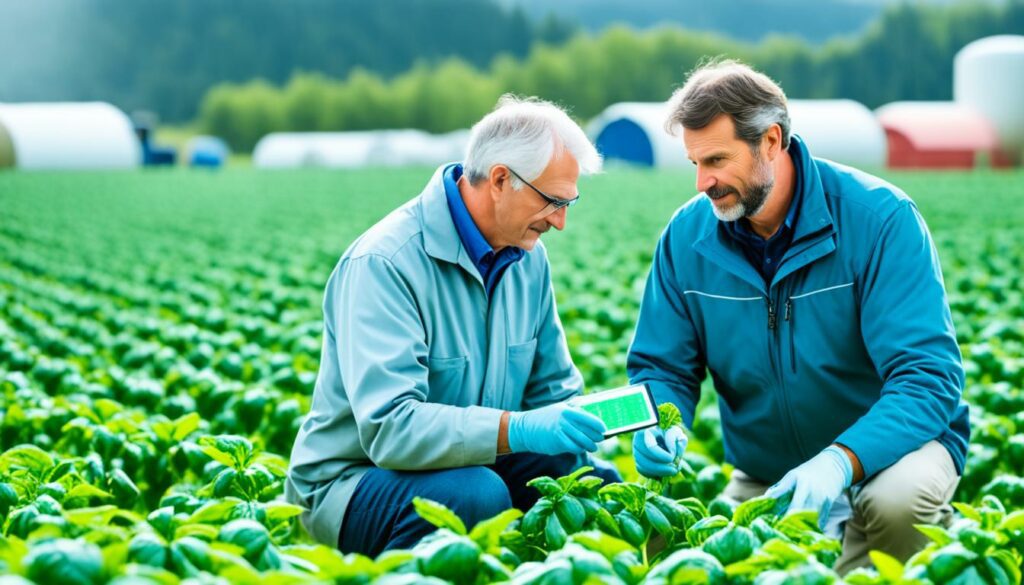
NIFA teams up with various federal agencies. They aim to tackle big agricultural issues faster. The United States Agency for International Development (USAID), United States Department of Agriculture (USDA), and more are key players. They push forward agriculture research and development. This teamwork ensures problems like food security are met with a strong, united front.
“NIFA works seamlessly not only within USDA but with various federal agencies to foster a comprehensive and integrated approach to agricultural innovation.”
The private sector is vital in agricultural innovation. Businesses work with NIFA to boost technology and meet research needs. They turn studies into real-life solutions. This move helps new agricultural technologies grow and last.
A great example is NIFA partnering with top agriculture companies. Together, they aim to solve new farming challenges. They work on everything from pest control to making farming more sustainable. This full-circle teamwork ensures global food security is met in a smart, sustainable way.
Globally, NIFA’s work helps countries tackle food safety and more. These efforts also help U.S. farming, strengthening world food security. Plus, they encourage earth-friendly farming around the world.
For more on how we boost agricultural research, check out NIFA Partnerships.
Working with research institutions in agriculture means teaming up with various experts. This includes farmers and those in the industry. There are over 100 colleges and universities part of the U.S. Land-Grant University System. This includes schools aimed at specific groups like historically black colleges and Hispanic-serving institutions. They are crucial in leading the way in new agricultural practices.
The NIFA (National Institute of Food and Agriculture) partners with not only the USDA but with others too. It aims to boost new technology in farming. These partnerships also include businesses from the private sector, making the tech’s impact even bigger. NIFA supports programs that bring agricultural science to communities, both in cities and the countryside.
The CGIAR works globally in agricultural research with more than 3000 partners in nearly 90 countries. It’s currently trying to grow even more, following advice from experts. This advice includes many actions to strengthen relationships with different research systems worldwide.
Sharing skills and knowledge is key to growing together in the agriculture field. CGIAR has laid down how it brings partners together to work towards the same aims. These partners come from a variety of groups, like NGOs, farming communities, and research organisations.
Feed the Future works closely with CGIAR centres, U.S. universities, and agriculture research systems worldwide. It focuses on creating better agricultural solutions. This includes things like increasing crop outputs, saving plant and animal species, and controlling pests. The goal is to make agriculture more sustainable and food security stronger.
Here is a detailed table showcasing some key statistics related to these partnerships and collaborations:
| Institution/System | Key Characteristics |
|---|---|
| Land-Grant University System | Over 100 universities, includes historically black colleges, tribal colleges, and Hispanic-serving institutions, present in all U.S. states and territories |
| NIFA | Partners with both USDA and external federal agencies, private-sector businesses, and non-profit organisations to enhance agricultural science and services |
| CGIAR | Collaborates with over 3000 partners in nearly 90 countries, focuses on comprehensive reforms and engages with NARIS |
| Feed the Future | Partners with U.S. universities and CGIAR centres, implements projects to improve food security and agricultural innovation |
Local universities are key in driving agricultural innovation. They set scientific goals, do deep research, and introduce new practical ideas. They play a vital role in enhancing agricultural learning, preparing the next crop of experts across different fields.
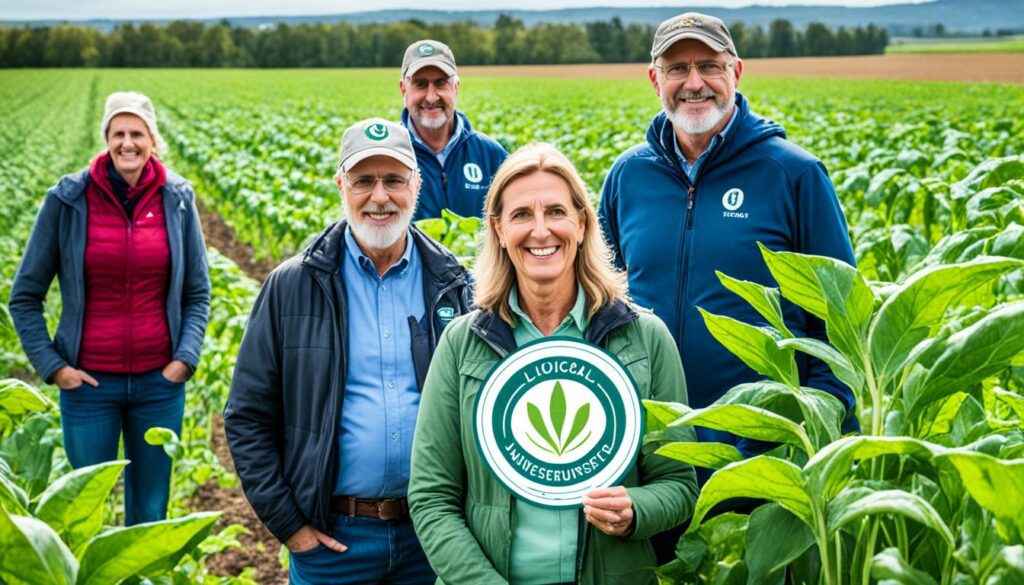
Working with groups such as Feed the Future, local universities in certain countries are crucial. They help shape the learning of upcoming agricultural experts. This teamwork ensures students get the newest information and skills to handle the big challenge of feeding the planet.
This partnership also allows universities to improve their teaching programmes. It makes them better at providing top-notch agricultural education.
Local universities have had a big impact on agriculture in many places. For example, in Ghana, they team up with the National Agricultural Research Systems. Together, they spot challenges in local farming and try out new ideas.
In Kenya, universities work with the CGIAR network. Their focus is on making crop production better and protecting genetic resources. These partnerships highlight the essential part local universities have in making real advancements in agriculture and strengthening food security worldwide.
The field of agricultural research is changing fast. It’s opening new doors to solutions through expanding research collaboration opportunities. By working together, different institutions and groups can combine their knowledge and resources. This is key to tackle the many challenges facing farming worldwide.
Emerging research fields in agriculture are where it’s at. We should aim at areas that can make a big difference. Take, for example, the recent move by the U.S. National Science Foundation. They, with the U.S. Department of Agriculture, Google, and Amazon, have invested $220 million. This money went to create 11 new AI research institutes across 40 states.
These institutes will delve into AI’s role in revolutionizing farming and food systems. Each will get about $20 million over five years. This shows a big push towards the future of farming technology.
In the international arena, collaborative efforts in agriculture are making waves. The National Institute of Food and Agriculture (NIFA) is a major player in forming global partnerships. Together, they fight for food safety, use of biotechnology, and preventing diseases.
Such teamwork boosts farming in the U.S. and supports food safety worldwide. The LGU system, with its diverse colleges and universities, is heavily involved. It represents various institutions, such as those serving black, tribal, and Hispanic communities.
NIFA’s partnership with agencies under and beyond the USDA strengthens their missions. It broadens the knowledge and tools for research and innovation. Businesses, non-profits, and societies also play a vital role. They help take agricultural science and services everywhere, from rural to urban areas globally.
As we press on with expanding research collaboration opportunities, we’re paving the way for a strong agricultural future worldwide. This joint effort will lead to new and effective solutions in farming.
Public-private partnerships in agriculture show big potential for good, especially in Uganda. They help small bean farmers improve their work and what they sell. These partnerships are making a real difference. They found that working together through these partnerships was much better than working alone. Men and women bean farmers had different results, showing the need for custom plans.
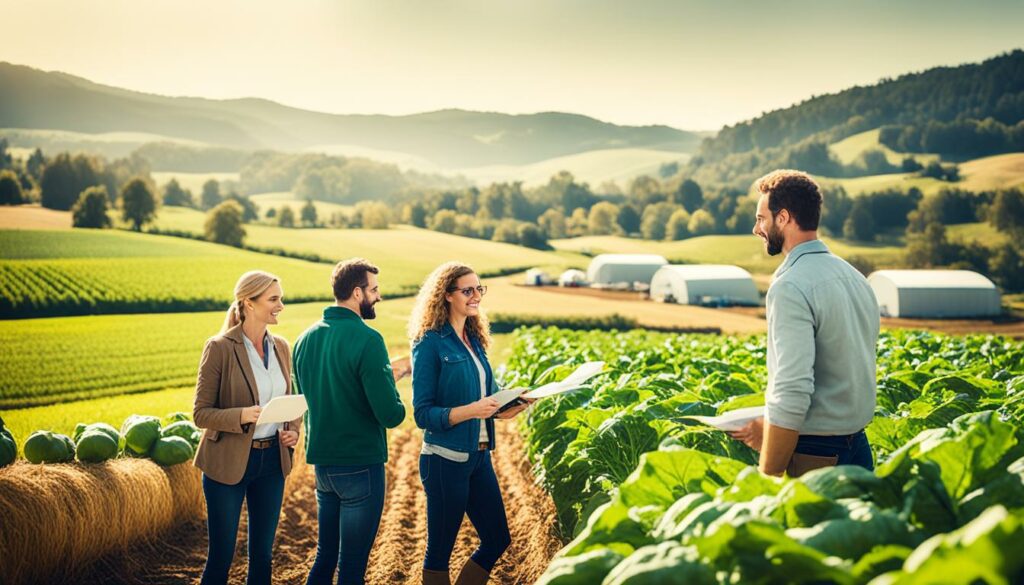
In Uganda, beans are very important, with many farmers growing them. They take up a big part of the farming land and produce a lot of beans. However, people in Uganda eat less beans per person compared to their neighbours in East Africa.
In India, farming is key to their economy, making up over 20% of its value. Yet, with a growing population, the sector will face more pressure. Public-private partnerships aim to improve how farming works. Through working together, they focus on 14 important topics to make farming better.
India is putting more money into farming, with a focus on new tech and better farms. By 2025, agricultural tech could be worth a lot of money. Working together like this not only helps grow more food. It also sets up a strong base for the future of farming, bringing new ideas and ways to the field.
The Agricultural Innovation Partnership Program shows the power of working together in agriculture. It aims to help farmers and teach about new agricultural methods. As a result, there have been big improvements in the agriculture of Minnesota.
The AIP is a program to help farmers deal with today’s challenges. By March 2014, it had already held one-day trainings for 3,009 farmers. It also made over 30 courses to teach skills needed in today’s job market.
After four years, AIP had a system where most farmers could get quick help through a phone app. This shows how using technology in farming can solve problems fast.
Since its start, AIP has done many projects with partners to promote new ideas. Working with universities and Krishi Vigyan Kendras (KVKs) has been very helpful. They offer support and follow up with farmers after training.
At the evaluation stage, talks with AIP staff and farmers showed a positive impact. Giving mobile devices to KVK agents has made support much better and faster.
| Evaluation Criteria | Statistics |
|---|---|
| Farmers Received Answers via Mobile Application | 78% (1056 out of 1351) |
| Participants in One-Day Awareness Trainings | 3,009 farmers |
| Courses Developed | 30-plus courses |
| Years of Implementation | 4 years |
The AIP’s success highlights the benefits of strong partnerships in agriculture. Its focus on education, technology, and helping farmers quickly has been very positive in Minnesota’s farming communities.
Working together on agricultural research is crucial. It helps tackle global food security and boosts farm production. Yet, collaboration faces big hurdles, mainly in getting enough money and sharing ideas clearly.
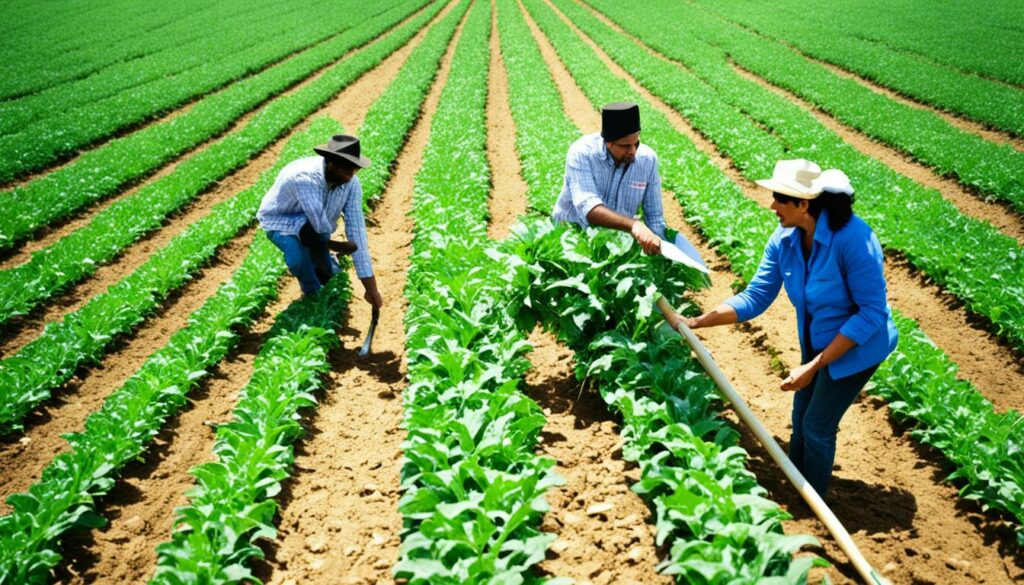
Getting enough money is a top issue in joint agriculture studies. There are many backers, from government agencies to businesses and charities. NIFA works with both the USDA and outside partners to improve research. But, getting and handling the right amount of cash is hard.
The Land-Grant Universities, including colleges for Black, Native American, and Hispanic students, play a major role. But, finding ongoing support is vital to keep these partnerships going. This needs help from local, national, educational, and business bodies to keep the money flowing.
Good communication is key in group research projects. With so many involved – like the Agriculture and Agri-Food Canada, companies, farmers, and labs – talking clearly is often tough.
Having forums and conferences can really help. For instance, an annual forum that the government and industry both chair. It covers risks, opportunities, and what needs to be done in agriculture. This sort of platform is great for exchanging ideas and making sure everyone works together well.
In short, solving the problems in working together in research, like lack of money and clear communication, needs a big team effort and new ideas. These steps are vital for building a stronger, more inventive research community in agriculture.
Agricultural research partnerships are changing to deal with climate change. They are also using new technology. This approach helps create farming methods that can last and protect the environment.
The USDA wants to grow more food in the U.S. by 40% before 2050. It also plans to help the planet by halving the farm’s impact. To do this, farmers are learning new ways and sharing what works best.
“The impact of climate change on agriculture is a pressing concern. Our strategy must integrate innovative conservation technologies into farm practices to boost productivity while protecting the environment.”
By 2030, we aim to cut food waste and loss by half. We’re also working on trapping more carbon and reducing harmful gases in 30 years. This shift shows we’re serious about farming in ways that don’t harm the planet.
New tech is flowing into agriculture. This tech makes farming more efficient and green. The USDA and others plan for the future of farming, setting goals for using tech wisely over the next 30 years.
They’re helping farmers use new tools to grow more and better, meeting targets for the environment. They’re also getting better at tracking what works, using data for smarter farming.
The USDA aims to cut the loss of nutrients by 30% across the country by 2050. It also backs clean energy from sources like ethanol. These commitments show how farming will continue to change with new inventions.
Agriculture is about to change for the better. Working together against climate problems and using the latest tech aim to make farming sustainable and productive.
| Year | Goal | Key Initiatives |
|---|---|---|
| 2030 | Reduce Food Loss and Waste |
|
| 2050 | Increase Agricultural Production; Cut Environmental Footprint |
|
The goal is to improve agriculture by fighting climate issues and adopting new tech. This way, we’ll meet the future’s needs without harming the Earth.

Joining agricultural research opens up many chances. It benefits people, schools, and businesses. We work with others to make better food and farming. Read on to learn about finding money and help for your work.
To get money for farming studies, look at places like FBO.gov and Grants.gov. They have lots of grants just for this. These are great for groups wanting to do new projects.
Working with the government and companies is also key. The USDA helps fund work that speeds up farming progress. Businesses put in money too, to bring new tech in farming.
For more help in farm research, check places like SCORE. They give advice to people starting or running farms. The Land-Grant University System has over 100 schools working in farming.
Places like Agrilinks help share ideas. They keep folks updated on farming’s latest news. This makes it easier for people to work together on big farming issues.
| Entity | Role | Support Offered |
|---|---|---|
| Federal Agencies | Collaboration Partners | Funding and Research Opportunities |
| Private Sector | Investment Partners | Financial Backing and Technological Innovation |
| SCORE | Educational Resource | Mentoring, Workshops, Online Resources |
| Land-Grant Universities | Research and Education | Research Initiatives, Academic Training |
| Agrilinks | Knowledge Platform | Knowledge Sharing and Networking Opportunities |
Working with research institutions in agriculture is very important for global food security. Collaborations are key. They bring together different experts to find new farming solutions. This union of researchers, farmers, and others has led to great success. By combining the efforts of both science and social studies, projects achieve more. They bring forward important and lasting changes in how we farm.
Looking at recent agricultural innovations, we see the power of working together. Different projects have different rules, groups, and methods. All of them, like the work supported by SARE, give us new knowledge and practical information. By getting funding from many places, agricultural research becomes stronger. It gets better at solving problems and improving how people work together.
In the upcoming years, there’s a big goal to make farming better by 2030. Many groups, such as EU’s agroecology research and the USDA, are working together. They want to change agriculture for the better. For this to work, we need to keep mixing different fields of study. Only by working together in various ways, we can make real positive changes for everyone.
Working together is key to tackling food efficiency, increasing yields, and dealing with climate challenges. This team effort includes universities, government bodies, companies, and research centres. They join forces to find sustainable answers.
Leaders in agricultural innovation are groups like CGIAR and NARS, plus U.S. universities. They also include organisations like Feed the Future. Together, they push research forward and bring new ideas to life.
A great achievement is seen through Feed the Future’s work. It’s improved how we grow crops and manage pests. Thanks to them, food security is better in many places.
These projects aim to create new farming methods that increase crop yield and improve quality. They also look at ways to deal with pests, diseases, and saving resources. This makes food production more stable and sustainable.
U.S. universities share a lot of knowledge and tools in these partnerships. They’re hubs for innovation and spreading knowledge. The work they do with Feed the Future’s Innovation Labs is a prime example of their role in fighting food security issues.
NARS makes sure to recognise and tackle local farming problems. They come up with new ideas and adapt technology to meet local needs. This strengthens countries’ abilities to handle future food problems.
CGIAR centres are mainly focused on improving crop production, conserving genetic materials, and managing pests and diseases. Their work creates benefits for everyone, moving forward global farming solutions.
Agencies such as USAID, USDA, and others in the U.S. play big parts in research. They help create and adjust new solutions for food safety.
The private sector helps take new farming ideas to market. By working with researchers and the government, they make sure these new solutions are used. This helps everyone’s food security.
Local universities set the stage for what research is most important. They do the research themselves and bring out new solutions. Also, they are vital in training the next generation of farm experts and leaders.
There are chances to study new farming areas and deal with climate change and health issues. By working together globally, the goal is to make stronger farming systems all over the world.
These partnerships are key in finding long-term solutions. By combining new products and business approaches, they benefit both farming and the environment.
This programme in Minnesota shows how well working together can improve farming. It uses guides, tools, and shared info to better the state’s agriculture.
Some big hurdles include getting and using money well. Also, making sure everyone talks and works together right is key to project success.
The focus will be on fighting climate change and using new tech. The goal is sustainable, strong farming methods that can face future challenges.
You can check for funding on websites like FBO.gov and Grants.gov. Also, places like Agrilinks offer ways to learn and join in on research and innovation.